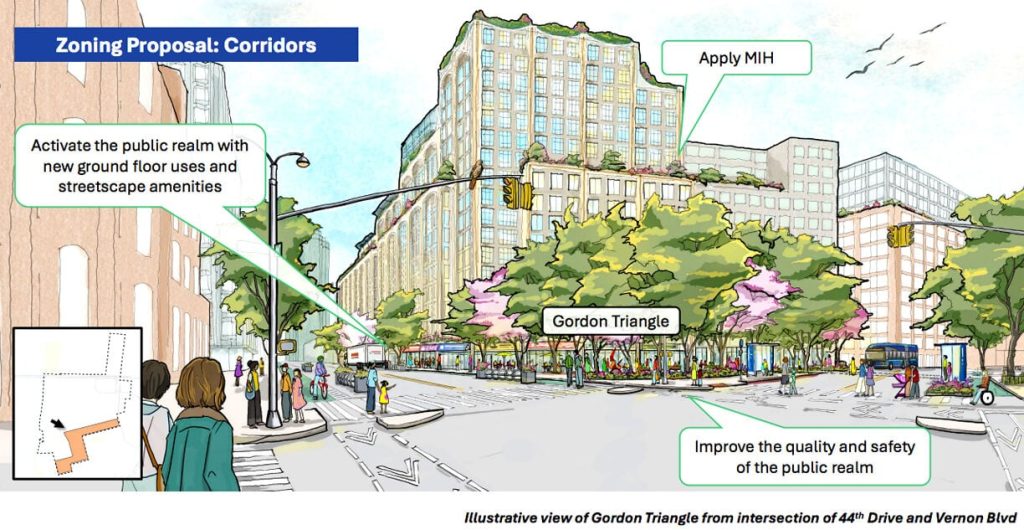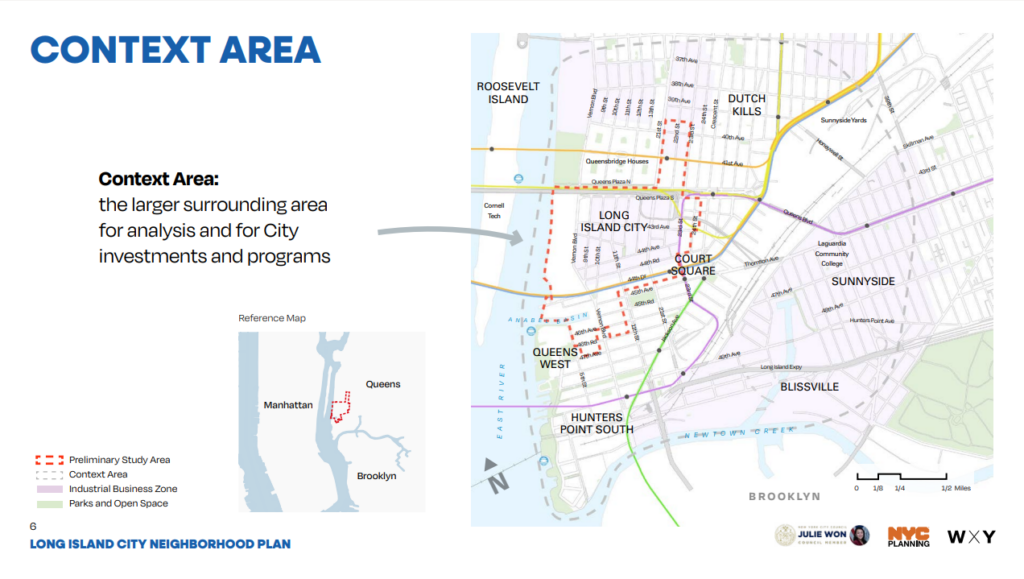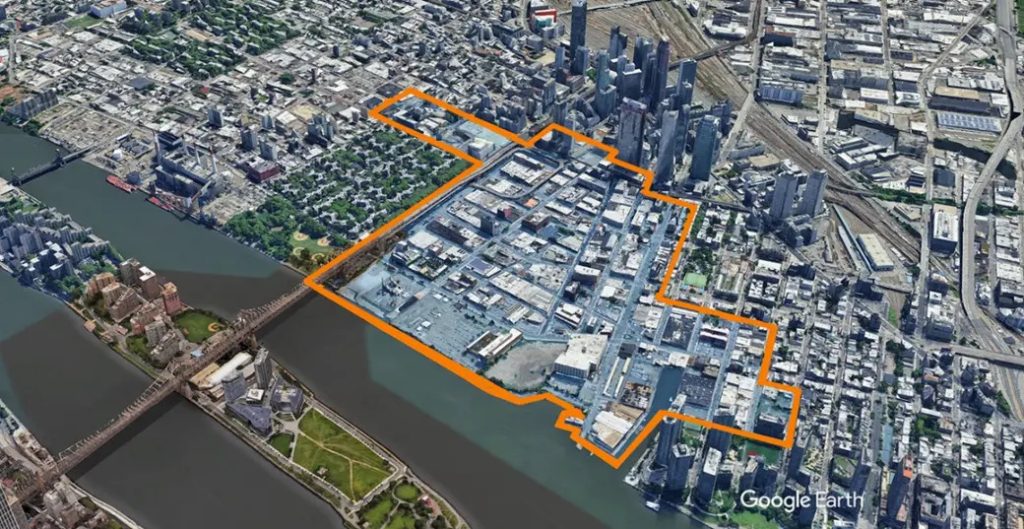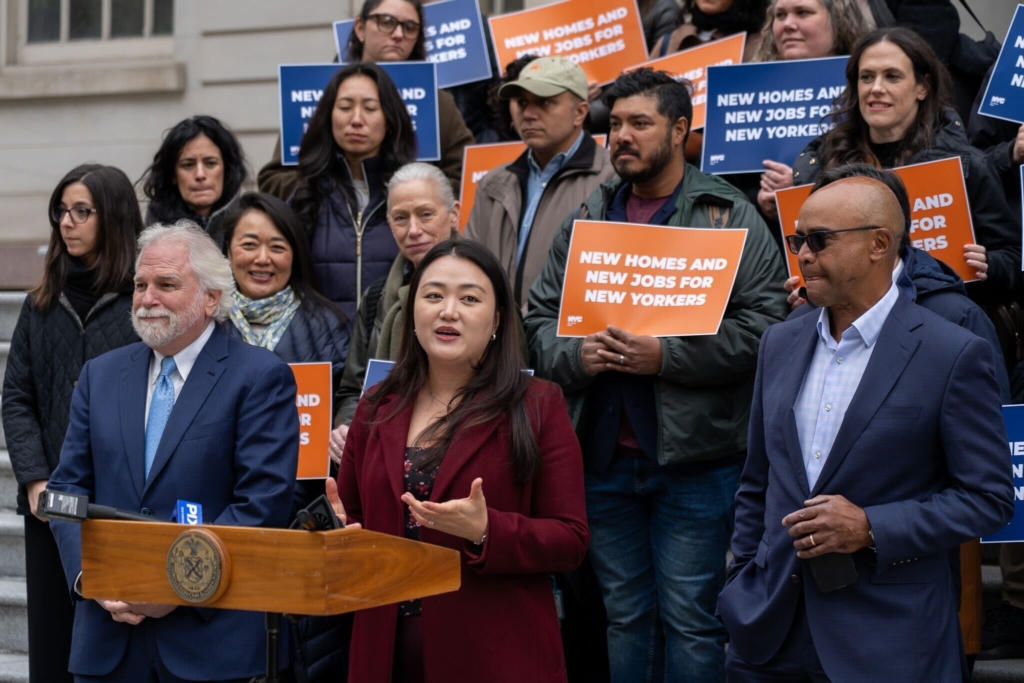
LIC Neighborhood Plan
LIC Rezoning Wins Council Approval
By MOHAMED FARGHALY
mfarghaly@queensledger.com
The New York City Council on November 12 approved the OneLIC Neighborhood Plan, a sweeping rezoning of 54 blocks in Long Island City that is expected to bring nearly 15,000 new homes and more than $900 million in community investments to western Queens. The action represents the city’s largest neighborhood rezoning in more than two decades and the fifth major rezoning approved by the Council in the last two years.
The plan will create roughly 4,350 permanently affordable units through Mandatory Inclusionary Housing requirements and the development of public sites. It will also enable 3.8 million square feet of commercial, community-facility, and light-industrial space in Council Member Julie Won’s district.
Speaker Adrienne Adams played a central role in negotiating the community investments tied to the rezoning, framing OneLIC as a key piece of the Council’s broader housing agenda.
“To confront the city’s housing crisis, the Council is proud to once again advance another historic neighborhood rezoning in Queens, just weeks apart,” said Speaker Adams. “This plan, shaped and strengthened by community input and the Council’s role in land use negotiations, delivers nearly 15,000 new homes alongside significant investments to improve neighborhood parks, schools, and neighborhood essentials. The level of housing affordability and funding commitments, including for public housing residents, would not have been possible without the Council’s voting power on behalf of communities in the land use process. I thank my Council colleagues for their partnership and Council Member Won for her leadership throughout the process to deliver an outstanding plan for her district, Queens, and our entire city.”
Council leaders said the package reflects growing urgency around the city’s housing crisis. The approval comes as Assembly Member Zohran Mamdani prepares to take office as mayor, placing responsibility for implementing the rezoning — and addressing the city’s wider housing shortage — in his administration.
Won served as the plan’s chief negotiator for the district, securing major investments for schools, NYCHA campuses, parks and waterfront access.

“Today’s vote passing the OneLIC Plan brings us closer to an integrated Long Island City,” said Council Member Won. “Over the last three decades, the City has allowed developers to dictate what is built in our neighborhood. These past two years, thousands of residents came together to envision our future. Through our advocacy, persistent community engagement, and disciplined negotiations, we secured historic investments in LIC to fund a connected waterfront, a restored park underneath the Queensboro Bridge, over 1,300 new school seats, sewage and plumbing infrastructure, NYCHA investments, and so much more—all that is long overdue. Finally, we will be one Long Island City, for current and future residents.”
The OneLIC plan is paired with substantial capital commitments secured through Council negotiations. More than $905 million in funding is guaranteed, with additional investments likely as plans for new schools and infrastructure advance. An online public tracker, expected to launch in December, will offer biannual updates on timelines and spending.
A significant share of the funds will support upgrades at NYCHA’s Queensbridge Houses, the nation’s largest public housing complex. The commitments include $102 million to modernize plumbing systems and install new water lines, and another $98.3 million for elevator replacements, sinkhole repairs, new playground space, and improved lighting. The Jacob Riis Community Center will receive more than $5 million for renovations, and vacant apartments at the development will be expedited for restoration.
The plan also expands open space in an area long constrained by industrial use and limited parkland. The Council secured $95 million to convert space under the Queensboro Bridge into new public areas and $30 million to overhaul Queensbridge Park with new playgrounds, adult fitness areas, upgraded lighting, and a destination water-play zone. A new waterfront esplanade, supported by nearly $90 million in funding, aims to create a continuous public shoreline.

Transportation and safety improvements total nearly $60 million. They include upgrades along the 44th Drive corridor, pedestrian and cyclist improvements near the Queens waterfront greenway, enhancements to the transit hub at 21st Street and 41st Avenue, and a lighting study in the Long Island City Industrial Business Zone.
To prepare for population growth, the Council locked in nearly $310 million to complete two new 547-seat elementary schools — one opening in Hunters Point in 2027 and another in Court Square in 2028. The administration will also begin acquiring private land for additional schools and pursue a new facility for the Baccalaureate School for Global Education to ease chronic overcrowding.
Cultural and community investments include funding for arts organizations, upgrades to the LIC YMCA, and planning for a potential new community center with a gym and swimming pool. Small businesses will receive support through lease assistance, regulatory guidance, and legal help.
“In our not-too-distant past, we have seen fear and division can stall progress for Long Island City. This rezoning demonstrates what can happen when we work together toward shared goals. By welcoming thoughtful private investment and ensuring community voices are heard, we are laying the foundation for a stronger, more equitable, and more affordable city,” President of the Queens Chamber of Commerce, Tom Grech said.

Last Wednesday’s legislative session also saw movement on several citywide measures. The Council voted to expand trash containerization, add sidewalk lighting to improve public safety, and — one day after Veterans Day — extend a property-tax exemption to Cold War–era veterans.
The OneLIC plan will now return to the City Planning Commission for a scope review of the Council’s modifications before heading back for a final Council vote at a future stated meeting. Under Speaker Adams, the Council has advanced land-use actions projected to enable more than 146,000 housing units citywide, including the Jamaica Neighborhood Plan and the City of Yes for Housing Opportunity zoning reforms.



